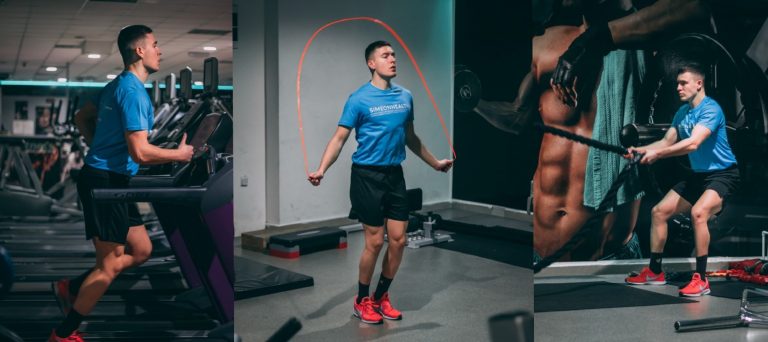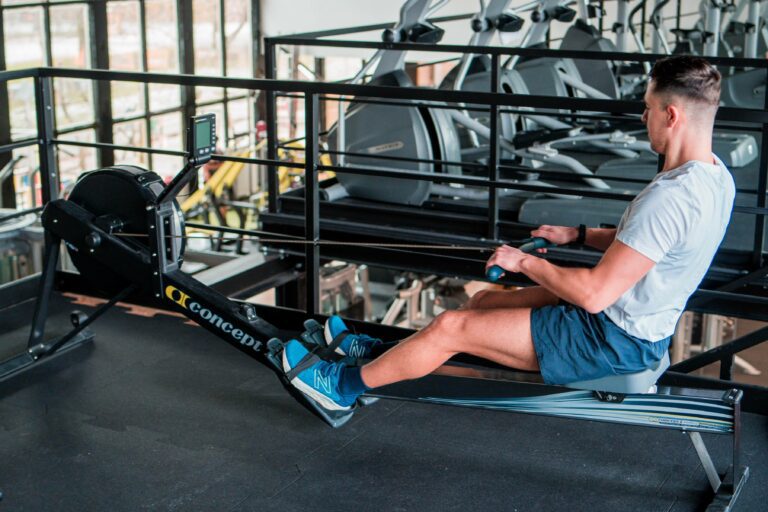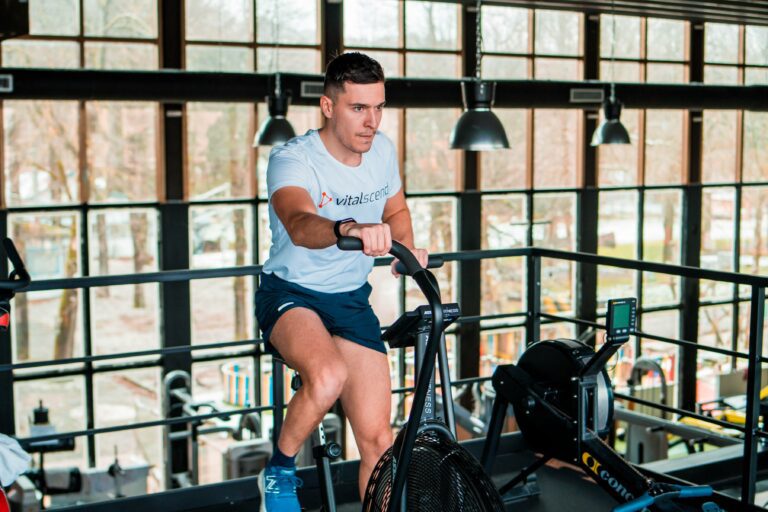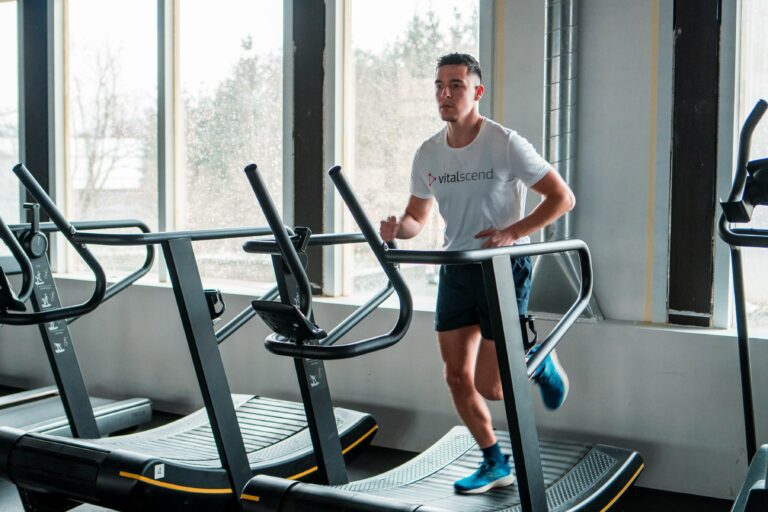NEAT Activity – 8 Strategies To Be More Active
In the realm of health and fitness, basic movement is highly underrated. Many seem to focus on intense workouts to achieve their goals. Considering that most people don’t spend hours working out weekly, increasing NEAT activity can be a great contributing factor to reducing weight and obesity.
The Industrial Revolution, in an attempt to optimize productivity brought in significant change to how people work. With automation, technology, and machinery comes a transition from manual labor to desk jobs, which significantly reduces energy expenditure.
It seems there is a practical way to improve body composition, burn more calories, and speed up weight loss. The only problem is, it’s too easy for people to believe in it. But we’ve seen it in action, it works. It’s called NEAT.
What is NEAT Cardio
NEAT, or Non-Exercise Activity Thermogenesis, refers to the energy expended for everything we do that is not sleeping, eating, or sports-like exercise. It includes the energy expended for activities such as walking, standing, fidgeting, and maintaining posture. In essence, NEAT is the energy we use for our daily movements that are not a part of structured exercise. NEAT can vary significantly from person to person based on occupation, lifestyle, and habits. (1) (2)
Put simply, it’s all the calories you burn through movement that’s not considered an exercise. Walking up the stairs, fidgeting in the cold morning, showering, typing on your keyboard, etc.
Research suggests that NEAT activity is a significant contributor to one’s energy expenditure, thus being an important factor to take into consideration for weight loss and weight maintenance.
Metabolism and Energy Expenditure: TEE, REE, TEF
In terms of burning calories, NEAT activity is significant over the long term. NEAT variance reaches up to 2000 calories daily. This depends on numerous factors like body composition, leisure-time habits, genetics, dietary intake, and more. (2)
Energy expenditure is a scientific term that relates to calories burned. What people call fast metabolism is the ability to burn a greater amount of calories. To understand how NEAT works and contributes to weight loss, we need to understand why we burn calories and to what degree physical activity plays a role.
Here’s a classification of energy expenditure, and which factors contribute to it. (2)
TEE
BMR
TEF
AAE
Total Expenditure [TEE] is the total amount of energy expanded [calories burned] in one day. It’s comprised of BMR, TEF, and [NE]AT.
Basal Metabolic Rate [BMR] is the energy expended at rest, to maintain essential physiological functions like heartbeat, respiration, and brain activity. It’s the energy we need to sustain life, at rest, the so-called Resting Metabolic Rate [RMR] that makes up the largest portion of TEE, or 65-75%.
Thermic Effect of Food [TEF] is the energy expended during digestion, absorption, and metabolism of nutrients in food. It’s the calories we’re burning to digest the food we eat, at approximately 5-12% of TEE.
Activity Thermogenesis [AT] to which both exercise [EAT] like running, lifting weights, and swimming, and non-exercise activity [NEAT] like fidgeting, cooking, and typing, contribute.
Fun Fact
Emotional responses, dealing with stress, and mood swings all contribute to energy expansion. This is why we feel drained and low-energy during emotionally tough times.
EAT vs NEAT
Aside from the energy burned at rest, the second most significant contributor to TEE is physical activity, so-called activity-related energy expenditure or AEE. It can be categorized into EAT [exercise-induced] and NEAT [non-exercise-induced].
For athletes, EAT often contributes a substantial portion to total energy loss. However, most adults exercise at moderate to vigorous intensity below 2 hours weekly. This accounts for only 100 calories of average daily expenditure, which is only 1-2% of TEE. (2)
So, unless you’re serious about your training, EAT isn’t helping that much in terms of calories burned. It has other great health benefits, but it may not be the holy grail of weight loss.
NEAT, however, is much easier and more practical to do. By switching a few simple habits one can move more and spend more calories without needing to crush the wall of intense exercise.
Research shows that NEAT, even for those who train, still comprises the largest share of AEE. Activities like singing, dancing, cleaning, standing, or leisure time activities can do the trick. Although they occur at a very low intensity, the time factor or doing something for longer periods contributes a significant portion of calorie loss. (2)

Benefits of NEAT Activity
Living sedentary is associated with a wide range of health problems. It degrades metabolic health, leading to obesity and diabetes. It weakens our bones and muscles, causing mobility deficits. It increases inflammation, speeds up aging, and contributes to poor mood and neurodegeneration.
Increasing NEAT can thus provide a wide range of health benefits. Particularly, increasing NEAT activity is important for weight loss, obesity prevention, and metabolic health which are all interconnected.
Many of the problems associated with weight gain and diabetes relate to degraded metabolic function, poor insulin sensitivity, and low energy production. Excessive calorie intake over the long haul greatly contributes to such issues. NEAT, by being a significant contributor to total energy expenditure can help tip the scale to net energy loss, which comes with a myriad of other benefits. (2)
Maintaining a negative energy balance is practical with NEAT. It can reduce the occurrence of metabolic syndrome, but also improve heart health and reduce all-cause mortality. (3)
Although a trivial amount of calories are burned through NEAT activity, these add up. The accumulation of calories burned over the long term is substantial to contribute to weight loss. (4)
As we know, obesity is linked to cardiovascular disease. Maintaining a healthy body weight and body composition is an important factor for heart health as well. The weight loss benefits of exercise contribute to heart health, they’re interconnected. Physical activity contributes to reducing the risk of coronary heart disease, by reducing blood pressure, improving cholesterol profile, and enhancing circulation. (5) (6) (7)
While enhancing aerobic performance will depend on a more structured and intense exercise, improving the aerobic base of your body can be done with NEAT. In a way, even low-intensity movements stimulate your heart to pump blood faster, improving its function. This promotes circulation, training your oxygen-transporting [red blood cells] and energy-producing [mitochondria] systems.
10.000 steps daily
Living an active lifestyle is a major factor contributing to overall health and well-being. One great indicator of physical activity or daily movement is step count. Before aiming to optimize your intense HIIT cardio for the maximum benefit, there’s a base we need to take care of.
That’s why getting our steps in 10.000 steps seems to be correlated to greater health, well-being, and longevity. While there’s nothing magical about that number, and it’s not a one-size-fits-all, 10K steps is an indicator of moving enough.
Walking more is inversely correlated with disease. (8) Matter of fact, research shows that active walkers have lower mortality rates. Walking can improve metabolic health, cardiovascular health, and aerobic fitness. It seems that an incremental increase of 3.000-4.000 steps daily accrues additional benefits, most of which occur above the range of 7.000-8.000 steps daily. (9) (10) (11) (12)
This assists in maintaining a healthy heart and working lungs, preserving aerobic function which declines with age.

How to Increase NEAT Activity
In theory, it’s all great. We’ve seen that non-exercise activities like fidgeting, typing, or playing a game can significantly impact calorie expenditure, assisting in weight loss. Now what can we do to increase our NEAT activity level?
Well, our primal ancestors were seeking shelter, hunting for food, and constructing their tree houses. Today, we have it easier. Most can sit at a desk and have everything they need → food, shelter, clothing, and security with a click of a button.
Here are some practical ways to incorporate more NEAT into your life
Standing Workstation → Standing burns more calories than sitting. Taking a few minutes to stand while working on a computer can add up. One study tested various workstation alternatives since most spend their day working. They’ve included 4 ideas such as standing, walking on a treadmill, sitting on a gymnastic ball, or pedaling workstation. We believe that walking on a treadmill here and there will accrue the most health benefits. (13)
Active Transportation → Depending on factors like distance to the workplace and weather conditions, one can adapt to cycle to work or park further away when possible. It’s a non-exercise type of activity that repeats a few times weekly, assisting the accrual of net calorie loss.
Walking Education → most people read books, listen to podcasts and conduct research. With a little optimization, most of us can still get the same input and learn the same things, while doing our light cardio [fast walking] simultaneously. Download an audiobook and a few podcasts to start. Next time you’re in your educational window, go out and walk while listening.
Playing Games → Most of the time when people play fun games they don’t think of it as exercise. But it is for your body, although it’s harder to recognize than when lifting weights at the gym or running on a treadmill. Playing cricket, softball, ping-pong, and the 8-ball pool is a fun way to break a sweat, while burning additional calories and training your brain.
Big Shopping Malls → instead of shopping for groceries in small stores, you can hit the big malls. It is very interesting how an hour of walking goes by unnoticed while shopping. Some huge malls like IKEA make hitting 4K in a single session a breeze.
Weekend Adventure → Take time to do something physical, at least on the weekends. It doesn’t have to be a grueling workout. It can be a hike with the family, a quick swim in the sea with your partner, a few laps around a large park, or cycling to your favorite coast near you.
Conclusion
- NEAT refers to the energy expended for all non-exercise activities like walking, fidgeting, cooking, or typing. It significantly contributes to calorie burning and can be vital for weight loss and maintenance.
- Total energy expenditure (TEE) consists of BMR, TEF, and AEE which is either exercise-induced [EAT] or non-exercise-induced [NEAT]. The accumulation of seemingly trivial amounts of calories over time makes NEAT a significant contributor to total energy expenditure.
- Increasing NEAT can lead to weight loss, obesity prevention, and improved metabolic health. NEAT helps maintain a negative energy balance, reducing the occurrence of metabolic syndrome, improving heart health, and reducing all-cause mortality.
- Active walking, specifically reaching 10,000 steps daily, is correlated with greater health, well-being, and longevity. Incrementally increasing steps daily can accrue additional benefits, with significant benefits occurring above the range of 7,000-8,000 steps daily.
- The best ways to increase NEAT activity include → standing or walking workstation, cycling to work, walking podcasts, playing games, taking the stairs, and hiking on weekends.








